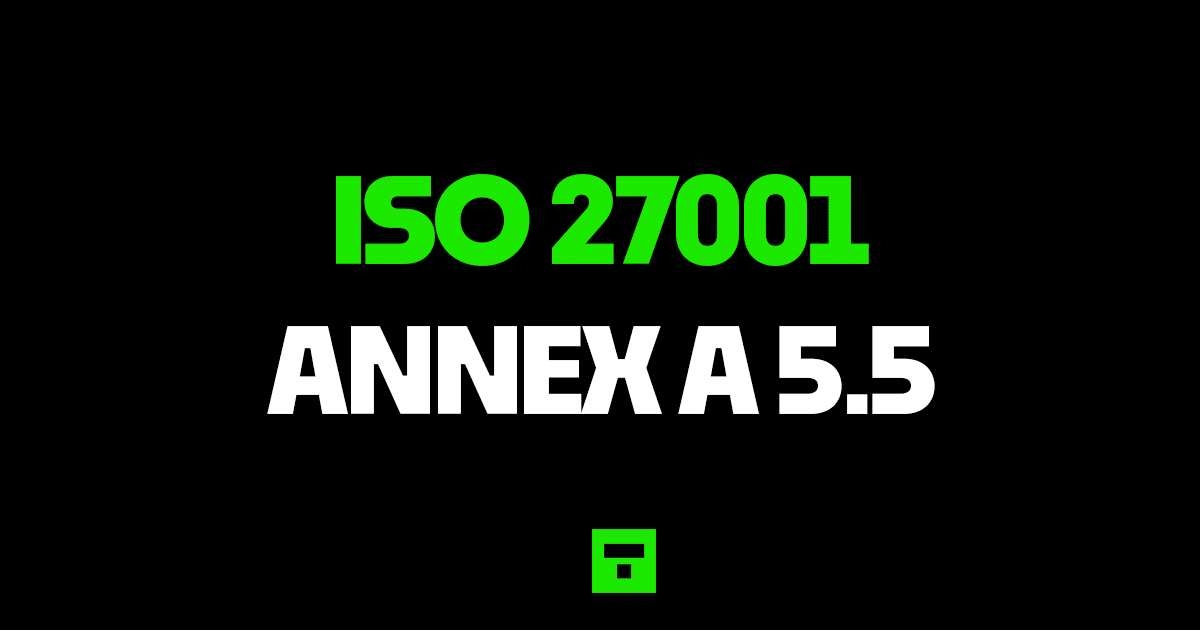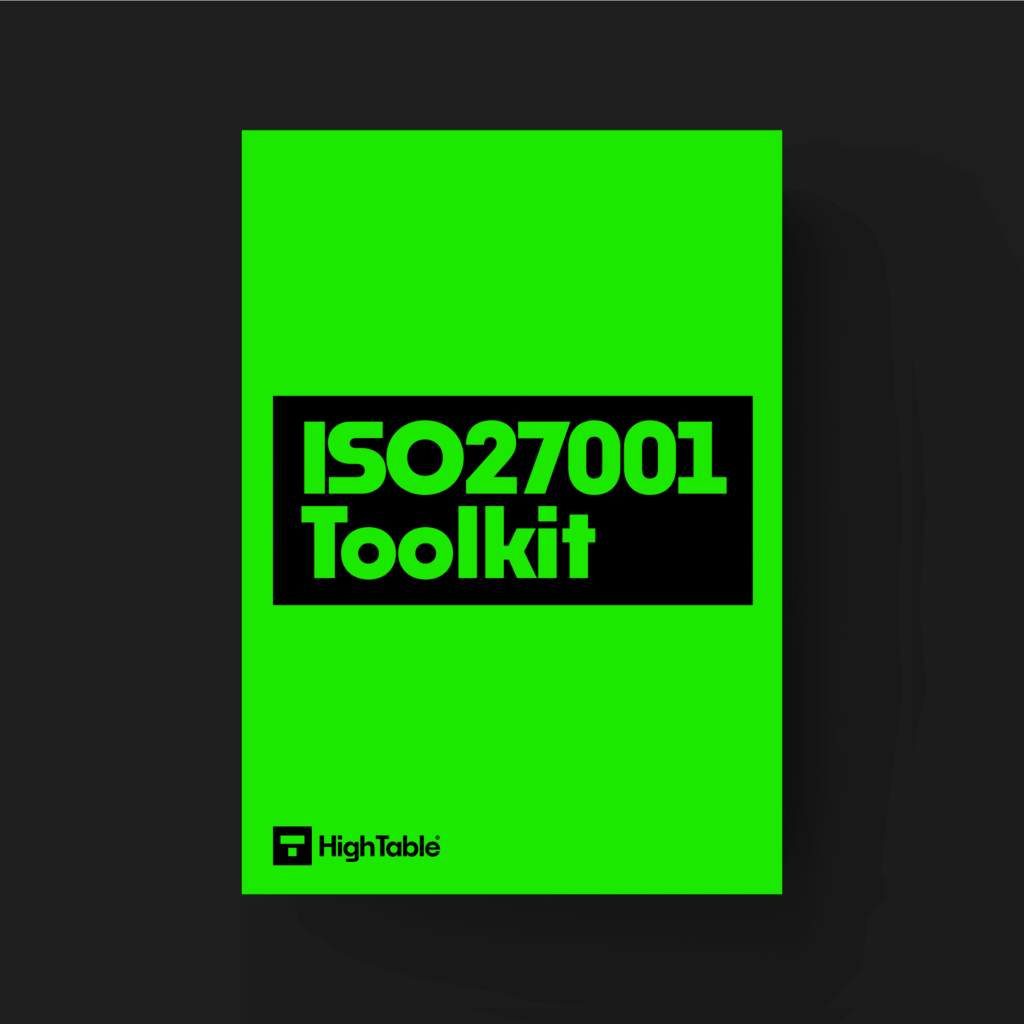In this ultimate guide to ISO 27001 Annex A 5.5 Contact With Authorities you will learn
- What is ISO 27001 Annex A 5.5
- How to implement ISO 27001 Annex A 5.5
I am Stuart Barker, the ISO 27001 Ninja and author of the Ultimate ISO 27001 Toolkit.
With over 30 years industry experience I will show you what’s new, give you ISO 27001 templates, show you examples, do a walkthrough and show you how to implement it for ISO 27001 certification.
Table of contents
What is ISO 27001 Annex A 5.5?
ISO 27001 Annex A 5.5 Contact with Authorities is an ISO 27001 Annex A control that requires an organisation to establish and maintain contact with authorities that are relevant to them.
Purpose
The purpose of ISO 27001 Annex A 5.5 is to ensure the appropriate flow of information takes place with respect to information security between the organisation and relevant legal, regulatory and supervisory authorities.
Definition
The ISO 27001 standard defines ISO 27001 Annex A 5.5 as
The organisation should establish and maintain contact with relevant authorities.
ISO 27001 Annex A 5.5 Contact with Authorities
Implementation Guide
You are going to have to ensure that:
- you identify and document what authorities apply to you
- in what circumstances you would contact them
- how information security incidents should be reported if relevant
- understand what expectations these authorities have, if any
- include relevant contact steps in your incident management processes
- include relevant contact steps in your business continuity and disaster recovery processes
People often scratch their heads at this one but an easy win is the contact with your data protection regulator that is likely mandated in law. In addition you can consider the likes of utility companies for power and water, health and safety if relevant, fire departments for business continuity and incident management, perhaps your telecoms provider for routing if lines go down.
Identifying the authorities we need to contact
We’re going to identify the authorities that we might need to make contact with. Now, if you are in a regulated industry that may be relatively straightforward, there may be regulatory bodies that you might need to make contact with.
If you’re within the European union and GDPR applies to you then you may need to register with your local data protection authority, for example in the UK you have to register with the Information Commissioner’s Office.
The next on the list, is going to be things like the support utilities.
So, contact with authorities, the standard actually looks at things like, okay, what about water and power and things like that. These are usually things that you’ve identified as part of your Business Continuity management process or you’ve identified as part of of your Incident Management process. So, having contacts for those utilities and a process in Incident Management by which you would contact them.
Obviously you’ve got things like law enforcement as well.
How to contact authorities
When it comes to how you’re going to contact them, most of these you know, it’s a no-brainer, right, you’re just going to follow whatever process they’ve got. So when it comes to documenting that, that’s kind of what you’re saying, right, I mean when it comes to contacting the police or law enforcement we’re going to follow whatever process they’ve got. When it comes to contacting our utilities we’re going to follow whatever process that they’ve got.
It is unlikely for the majority of organisations that we have a special one to one relationship where we have our own bespoke process but in terms of the requirement of the standard you’re going to identify those authorities that you need to make contact with and how you contact them. Relatively straightforward.
Documenting contact with authorities
You’re going to list those out. You’re going to have contact details for all of those and you’re going to have the process by which you contact them, which is going to say, default, you know, follow the process that they have in place but then you’re going to bake into things like your Incident Management, your data breach, your processes where a requirement may be placed upon you to contact those authorities, you’re going to put that into the process and you’re going to call that out and document that.
Contact with authorities ISO 27001 example
Examples of authorities that you may need to contact
- Data protection regulator
- Industry Regulatory Bodies
- Government Agencies
- Law Enforcement Agencies
- Power Companies
- Telecoms Companies
- Utility Companies
- Emergency Services
Watch the Tutorial
If you would rather watch than read you can watch How to implement ISO 27001 Annex A 5.5 Contact With Authorities – and pass the audit
ISO 27001 Templates
The ISO 27001 Toolkit is your fast track to Do It Yourself ISO 27001 certification and includes everything you need to meet the requirements of this control.
DO IT YOURSELF ISO 27001
All the templates, tools, support and knowledge you need to do it yourself.
How to comply
To comply with ISO 27001 Annex A 5.5 you are going to implement the ‘how’ to the ‘what’ the control is expecting. In short measure you are going to
- List the relevant authorities and document your who, how and when you will contact authorities
How to pass an audit
To pass an audit of ISO 27001 Annex A 5.5 Contact with Authorities you are going to make sure that you have followed the steps above in how to comply.
What the auditor will check
The audit is going to check a number of areas. Lets go through the main ones
1. That you have a list of authorities you would contact
What this means is that you need to show that you have a list of authorities that you have considered and are in scope for you.
2. That you have a process to contact them
The process may be straightforward. Many authorities have pre defined ways in which you contact them. Just write them down.
3. That you have contacted authorities
There is not an expectation that you have contacted everyone on your list. It just wont be relevant. But some of those contacts will be mandated in law or regulation, and for those, you should have evidence the contact took place. A simple example would be registering with the data protection supervisory body.
Top 3 Mistakes People Make
The top 3 Mistakes People Make for ISO 27001 Annex A 5.5 are
1. You didn’t register with the Data Protection registrar
Often a legal requirement, make sure you have registered as a data controller or data processor, which ever applies, with the relevant bodies. They will check.
2. You don’t have a list of relevant authorities
You thought it was obvious so didn’t write it down. Wrong. Write it down to show you considered it.
3. Your document and version control is wrong
Keeping your document version control up to date, making sure that version numbers match where used, having a review evidenced in the last 12 months, having documents that have no comments in are all good practices.
FAQ
There are templates for ISO 27001 Annex A 5.5 located in the ISO 27001 Toolkit.
Some would argue that ISO 27001 Annex A 5.5 Contact with Authorities is not that important as it is glaringly obvious. You would contact the fire department if you had a fire. You would contact the police if a crime was committed. I am not here to disagree with you. But the standard wants these things documenting so document them.
The purpose of this control is to ensure appropriate flow of information takes place with respect to information security between the organisation and relevant legal, regulatory and supervisory authorities.
ISO 27001 Annex A 5.5 Sample PDF in the ISO 27001 Toolkit.
Yes. Clearly it is stating the bleeding obvious but this has never stopped the standard before it wont stop it now. They are explicitly required for ISO 27001.
ISO 27001 templates for ISO 27001 Annex A 5.5 are located in the ISO 27001 Toolkit.
ISO 27001 Annex A 5.5 is not hard. It is stating the bleeding obvious.
ISO 27001 Annex A 5.5 will take approximately 1 hour to complete if you are starting from nothing and doing it yourself.
The cost of ISO 27001 Annex A 5.5 will depend how you go about it. If you do it yourself it will be free but will take you about 1 hour so the cost is lost opportunity cost as you tie up resource doing something that can easily be downloaded.
Examples of authorities are
Utility companies
Telecoms Companies
The Police
The Fire Department
Data Protection Supervising Bodies
As a rule you follow their prescribed process for contacting them. Anything else would be madness.
Yes.
ISO 27001 Controls and Attribute Values
| Control type | Information security properties | Cybersecurity concepts | Operational capabilities | Security domains |
|---|---|---|---|---|
| Preventive | Confidentiality | Identify | Governance | Defence |
| Corrective | Integrity | Protect | Resilience | |
| Availability | Respond | |||
| Recover |


